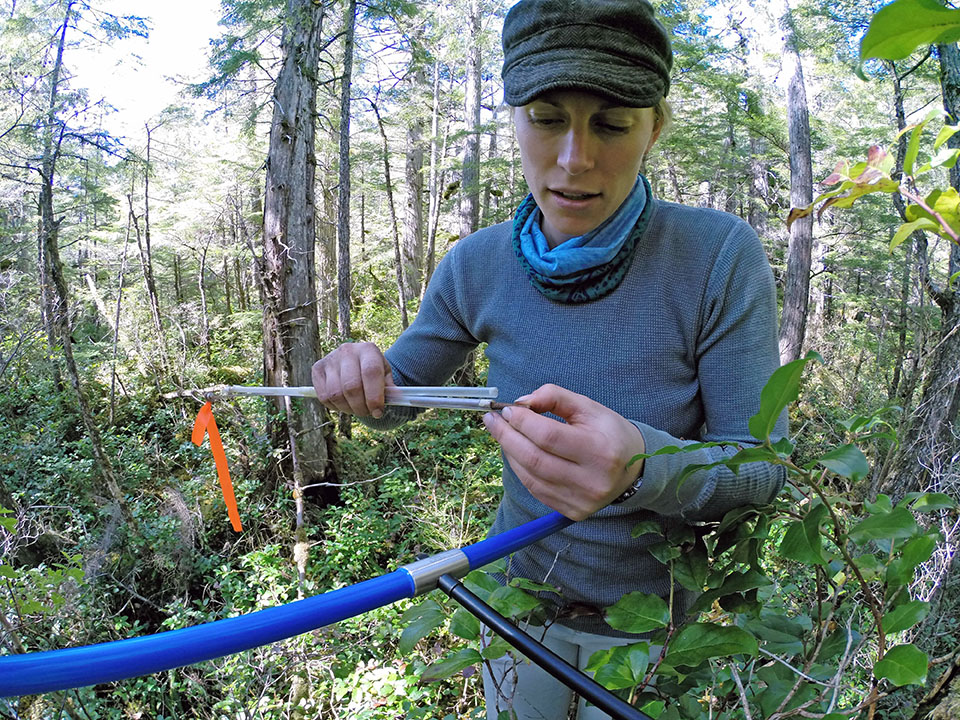Fires among tools of First Nations forestry
Social Sciences, Graduate Studies
- Anne MacLaurin

Prior to European contact, First Nations inhabited the Great Bear Rainforest for at least 13,000 years, and two recently published research papers show how the ancient forest responded to human habitation.
Rainforests are by their nature soggy and wet without a natural tendency to burn. New findings shows First Nations repeatedly burned the coastal rainforest prior to European contact—likely in order to increase the productivity of plants for food and medicine. According to the research this discovery calls into question our current understanding of fire activity in coastal temperate rainforests.
The most recent study, led by UVic PhD candidate and Hakai scholar Kira Hoffman, indicates that First Nations burned the forest approximately every 39 years and the last recorded fire in the area was in 1893—making this 123-year period (1893 to present) the longest fire-free period in over seven centuries.
“Scientists used to think that BC’s coastal temperate rainforests were too wet to ignite, but our study confirms that First Nations did set low-intensity ground fires, likely as a tool for resource management,” says Hoffman, whose study was published this week in Royal Society Open Science.
There are no known fires in the study area during the 20th century, leading Hoffman to believe that when First Nations abandoned the area the fire regime was completely altered.
“There is no evidence of fire activity in the 20th century—a significant finding,” says Hoffman. “It shows that First Nations burning was once an integral component of temperate rainforest ecology on the Central BC Coast. Low-intensity fires are healthy for forests and we don’t know how this ecosystem is responding without them—that's our next line of inquiry.”
Hoffman was also a co-author on an earlier study, published in the journal Nature Communications, where researchers found it wasn’t just historic fire activity that shaped the rainforest, but for the first time showed positive impacts on forests from human settlement. For example, trees near former First Nations villages on BC’s Central Coast have grown taller, wider and healthier than those in the surrounding forest—the direct result of human habitation and long-term intertidal resource use.
More than five hundred generations of coastal First Nations have left behind deep shell middens (sometimes more than five metres deep) which in turn deposited highly beneficial nutrients into the soil.
“For more than 13,000 years, humans have been transforming this landscape and the forests have thrived from the relationship with coastal First Nations,” says ecologist and lead author Andrew Trant, who conducted this research as a Hakai post-doc with the Starzomski Lab at UVic and is now an assistant professor at the University of Waterloo.
Whether it was the intentional use of fire or the centuries of human habitation, the Great Bear Rainforest was transformed—and thrived—through interaction with coastal First Nations.
---
The Globe and Mail reported on the story, along with CFAX news, United Press International and CBC’s flagship program Quirks and Quarks.
Trant was funded through the Hakai Institute. Hoffman received funding from the Natural Sciences and Engineering Research Council.
Photos



